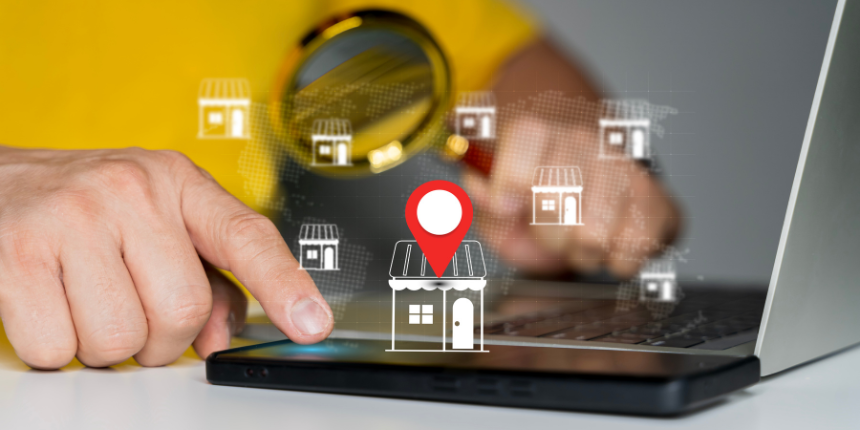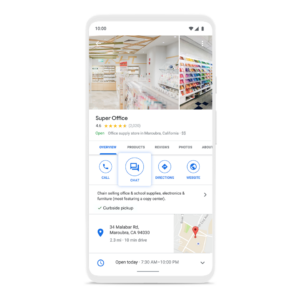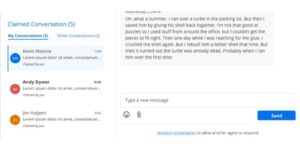
Maximize your local presence through strategic location management.

Customers are increasingly spoiled for choice when it comes to connecting with businesses. They can have their queries answered through the static information on websites or social media, or they can call or email with their specific questions or requests. Increasingly, though, Gen X and younger generations now prefer to text. Whether it’s asynchronously or a real-time back and forth, texting now easily exceeds calls and emails.
With this being the most common method of communication—and 89% of consumers saying they prefer texting with businesses over any other mode of communication—businesses need to keep up. That’s why Google has implemented Google Business Messenger (GBM) into its tech stack, allowing businesses of all sizes to receive and respond to messages from its customers.
GBM is built directly into a company’s Google Business Profiles (GBP). Depending on the business’s Google category, GBM will allow messaging through calls-to-action like “Get a Quote” or simply “Chat”, signaling the primary purpose a business may have decided for its messaging service.
Importantly, GBM sits at the top of the purchase funnel, being presented to users that may be conducting early research or comparing their options. By comparison, the live chats on many businesses’ websites are usually tailored for existing customers or people in the final stages of a purchase decision.

Businesses that include messaging in their GBPs reduce a significant amount of friction towards obtaining leads. Customers may not intend to message a business when they first encounter it on Google, but when the option is highlighted, they are encouraged towards more committal behavior. GBM is a more enticing method of getting customers to speak to businesses, assuming they have the infrastructure in place to respond to these messages.
Small businesses can choose to designate a single cellphone to receive these messages, but multi-location businesses can’t opt for the same solution across dozens or even hundreds of locations. That’s why DAC has integrated Google’s messaging function into TransparenSEE, our multi-location marketing dashboard. Along with the usual suite of services that comes with Local Presence Management, this is the latest feature that can comfortably scale to work for enterprise-level businesses.
Business Messages allows brands to respond directly to all communications sent through their Google listings—an efficiency that would otherwise be impossible to achieve. By aggregating every message from a brand’s Google listings in one place, then allowing customer service representatives to coordinate these conversations, brands are empowered to provide quick and convenient support for customers, improving both their online presence and, ultimately, their performance.
Subscribe to our monthly newsletter.

Businesses first need to set up an automated welcome message, a feature that Google offers by default. Much like texting, sending an initial message to a business and getting no reply can make customers think the feature may not even be working. After that first response, customers expect follow-ups that are unique to their query. If a customer doesn’t receive a personalized message within 24 hours of that initial automated message, they will likely lose interest and the business will have lost a lead.
The real-time nature of these interactions is what makes GBM so difficult to scale, but DAC’s Business Messages resolves this issue as well. Through a centralized hub, businesses can assign one or more customer services representatives to one or more Google listings. These representatives will see all new messages and ongoing active interactions, and have the ability to claim conversations to manage. In addition to scaling the usual features of GBM, bringing messaging within a single dashboard allows businesses to monitor the performance of their agents and collect metrics about the success of their messaging service.
As messaging continues to grow as the preferred method of communication for Gen X and younger generations, businesses will increasingly be expected to accommodate it. Through DAC’s Business Messages, multi-location businesses will gain the same advantages that Google Messaging grants local competitors, communicating directly with customers how they prefer it the most.
By resolving issues and answering questions right as they appear, local touchpoints will become even more powerful as sales are captured the instant an opportunity arises. Business Messages will provide an astounding increase in customer satisfaction by making even the largest brands feel as personal and accommodating as the smallest local competitor. Want to get started? Let’s talk.
Maximize your local presence through strategic location management.
Maximize your local presence through strategic location management.
Subscribe to our monthly newsletter.